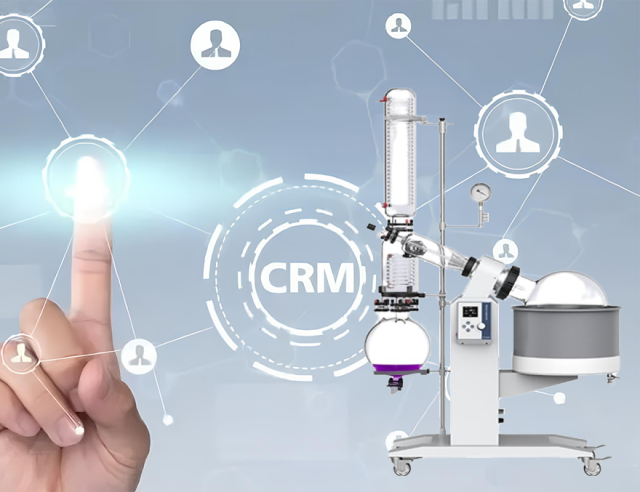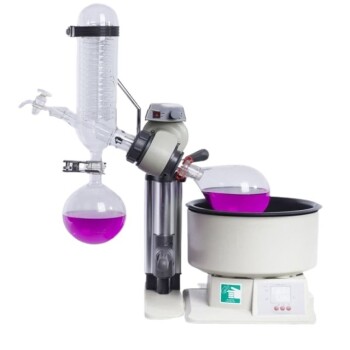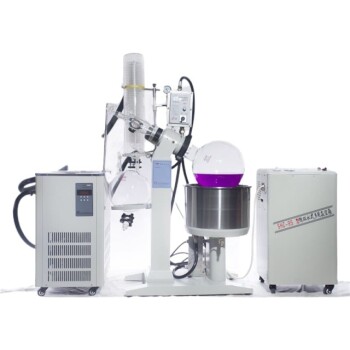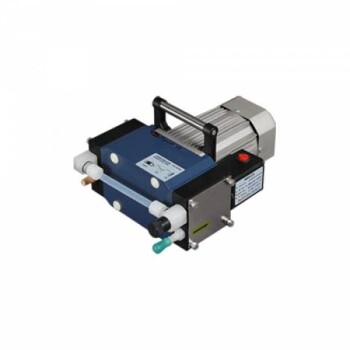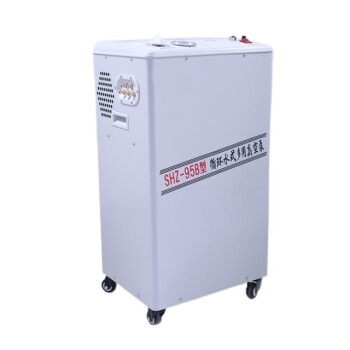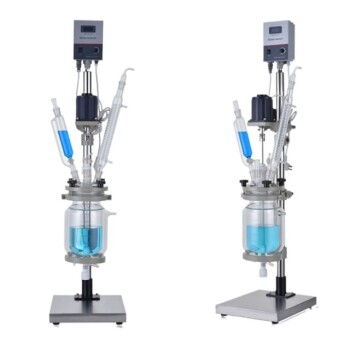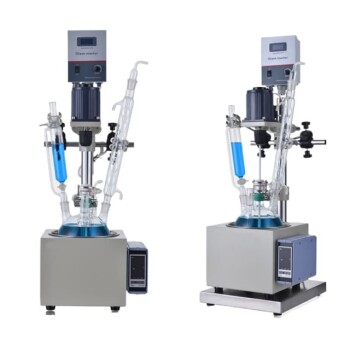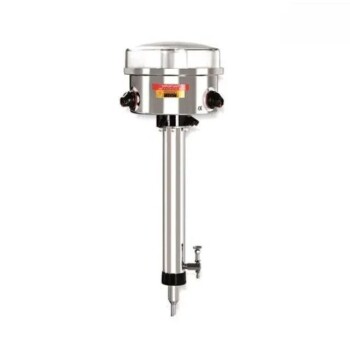Introduction
Distilling liquids is a process that has been used for centuries. The traditional method of distillation can be time-consuming and requires a lot of energy. However, with the advent of modern technology, there are now more efficient ways to distill liquids. One such method is through the use of a rotary evaporator, or rotovap for short. A rotovap is a piece of laboratory equipment that uses a combination of heat, vacuum, and spinning to separate liquids into their individual components. In this guide, we will walk you through the steps to properly use a rotovap and distill your liquids with ease.
Table of Contents
- Introduction
- What is a Rotovap?
- How Does a Rotovap Work?
- Important Features of a Rotovap
- Using a Rotovap Properly
- Step 1: Choose an Appropriate Location
- Step 2: Ventilate the Area
- Step 3: Attach a Splash Shield
- Step 4: Choose Plastic Coated Glassware
- Step 5: Use a Level Sensor
- Step 6: Install a Secondary Condenser
- Conclusion
What is a Rotovap?
A Rotovap is a device used in chemical laboratories for the efficient and gentle removal of solvents from samples by evaporation. It is also known as a rotary evaporator. The process involves placing a liquid mixture into a flask and then rotating the flask to increase the surface area of the liquid. This increased surface area allows for more efficient evaporation.
How Does a Rotovap Work?
The rotovap is a simple concept with a lot of moving parts. The material needs to be heated to the point of evaporation and then cooled and condensed. The process is like distillation but even more precise. The vacuum pump is the source of reduced pressure in the system. Spin speed and bath temperature control knobs. Water bath. Bump guard. Cold finger. (Please do not use the rotovap if the finger is not cold. There should be excess solid dry ice in the finger.) Vacuum release valve.
Why is a Rotovap Used?
Since the rotovap removes the solvent under a vacuum, the temperature needed to evaporate the material can be lower, meaning the material is less likely to be overheated and the system can run at cooler temperatures. The benefit to using a rotovap over a simple distillation system is that the rotation of the evaporating flask, combined with a heated water bath, increases the surface area of the product. This makes the distillation go faster and keeps the mixture evenly mixed and heated, to promote a stable and even evaporation.

Applications of Rotovap
Rotovaps are used for a variety of industrial applications including molecular gastronomy, biofuel extractions, and the alcohol industry. In the cannabis and hemp industry, rotovaps are used mainly in the winterization process. The lower heating temperatures of the rotovap helps to preserve the quality of the oil, and makes the rotovap safer and more energy efficient.
Final Thoughts
In summary, a rotovap is an essential tool for any laboratory that needs to distill liquids on a regular basis. The rotovap is efficient and easy to use, making it a popular choice for distilling liquids in the laboratory. With its ability to gently and efficiently remove solvents from samples by evaporation, the rotovap has a wide range of applications in many industries.
How Does a Rotovap Work?
Rotary evaporators, also known as rotovaps, are commonly used laboratory equipment for the distillation and purification of liquids. The device is used to separate and concentrate samples in various fields, including chemistry, biology, and pharmaceutical research.
The basic principle of a rotovap is vacuum distillation. The process of rotary evaporation involves three basic steps: evaporation, condensation, and collection.
Evaporation
The liquid sample is placed in a rotating flask, which is heated by a heating bath. The rotating flask ensures that the sample is evenly distributed, allowing for a more efficient and consistent distillation process. This causes the liquid to evaporate, leaving behind any solid impurities or other substances.
Condensation
The evaporated liquid rises and is then condensed by the water-cooled condenser. This converts the vapor back into a liquid, which is then collected in a separate flask. The condensed liquid is collected in a separate container while any remaining impurities or unwanted substances are discarded.

Collection
The condensed liquid is collected in a separate flask, while any remaining impurities or unwanted substances are discarded. The rotating flask ensures that the sample is evenly distributed, allowing for a more efficient and consistent distillation process.
By electronic control, the flask rotates at a suitable constant speed to increase the evaporation area. The distillation flask is kept in a condition of sub-pressure by a vacuum pump to let it rotate and heat in a water bath at a uniform temperature. The solution in the flask is heated and diffused to evaporate under sub-pressure in the rotating flask. A rotary evaporator system can seal decompression to 400 ~ 600 MMHG. If the solvent in the distillation bottle is heated in a heating bath, the heating temperature is equivalent to its boiling point.
The centrifugal force produced as a result of the rotation keeps the liquid stuck to the inside of the vessel providing a large surface area and accelerating the evaporation process. The key to understanding any distillation is to remember that it is a separation. Sugars, acids, colors, and most bitter compounds are separated from aromas, alcohols, water, and small flavor molecules, etc. What is phenomenal about rotovap distillation, as opposed to standard distillation, is that it can separate food compounds from one another without altering them.
In summary, the rotovap works by applying vacuum pressure to lower the boiling point of the liquid, allowing for a more efficient separation of components. The rotating flask ensures that the sample is evenly distributed, allowing for a more efficient and consistent distillation process. By understanding how the rotovap works, researchers can more effectively and efficiently distill liquids for their specific needs.
Important Features of a Rotovap
When selecting a rotovap for distillation, certain features are essential to ensure efficient and safe operation. Here are the key features you should consider:
Vacuum System
The vacuum system is one of the most important features of a rotovap. It should be capable of maintaining a low-pressure environment to facilitate evaporation. A good vacuum system will allow you to distill a wide range of solvents, including those with high boiling points.
Flask
The flask should be made of high-quality glass or stainless steel and be able to withstand high temperatures. It should also be able to accommodate the volume of your mixtures, up to 2-3 liters.
Temperature Control
A digital display for temperature control is crucial. It allows you to set the desired temperature and monitor it during the distillation process. This feature will enable you to avoid bumping and unwanted reactions in your sample.
Rotation Speed Control
Adjustable speed settings for the rotation are also crucial. Having precise control of the rotation speed in your evaporation flask is important. The rotating motion agitates your solution and the water bath, accelerating the heat transfer between the flask and your solvent.
Safety Features
A safety lid and an automatic shut-off feature can prevent accidents and protect the operator. The safety lid ensures that the system remains sealed during operation, while the automatic shut-off feature turns off the equipment if the temperature or pressure exceeds a certain level.
Condenser
The condenser is an integral part of a rotovap. It cools the vapor back into a liquid, which is then collected into a separate flask. The condenser should be made of high-quality glass or stainless steel and be able to withstand high temperatures.
In conclusion, when selecting a rotovap, it is important to consider the key features that will affect its performance and safety. With the right equipment and proper training, rotovaps can help researchers and scientists obtain high-purity samples for a range of applications.

Correct use of Rotovap
When using rotovap, specific steps must be followed to maximize its effectiveness and safety. Here are some basic steps to consider:
1. Keep your Rotovap in a safe place
Before operating the rotary evaporator, make sure the environment is non-explosive and non-corrosive. Also, make sure to place the rotovap in a low-risk area, away from strong vibrations and shocks that could damage the device or cause it to malfunction.
2. Ventilate your Rotovap properly and use a fume hood
Ventilation is vital to keeping equipment in optimal working order. Experts recommend venting your rotovap after use and before disassembly to avoid harmful vapors that could harm you or the environment. You can also use a rotovap with a fume hood to capture fumes, gases, and vapors, safely removing these elements from the surrounding work area.
3. Install a splash guard or guard
During the distillation process, material splashing is inevitable. To prevent possible contamination and injury, you can enclose the evaporating flask with a splash guard or protective cover. The main difference between these two types of protection is that a splash guard requires you to physically remove the evaporating flask from the spinner, leaving you temporarily unprotected.
4. Choose plastic-coated condensers and flasks
Borosilicate glass is a widely used material used in the manufacture of condensers and flasks. However, if you feel that containers made of this specialized glass do not meet the standards, you can purchase plastic-coated glassware. Plastic-coated flasks and condensers are more resistant to mechanical shock and reduce leakage of contents if the glass breaks. Additionally, plastic-coated glassware keeps chemicals intact in the event of an implosion or violent impact.

5. Use a liquid level sensor
A liquid level sensor is a tool that measures, monitors and maintains liquid level. Once the device detects that the fluid level has reached maximum capacity, it will send an electrical signal to remind you to unload the contents of the collection bottle.
6. Install a secondary condenser to eliminate emissions
The secondary condenser prevents emissions to the air by condensing and storing all solvent vapors in the rotovap's receiving flask. By installing a secondary condenser, you can increase the level of safety in your workplace by spreading out the steam flow rate and reducing hazardous emissions.
By following the steps above, you can use your spinner correctly, minimize the risk of laboratory accidents and increase its efficiency.

Step 1: Choose the right location
To distill liquids using a rotary still, the first step is to choose a suitable location for the device. Here are things to consider when choosing a location:
Consider ventilation
The chosen location should be well ventilated to allow for proper air circulation. This is important to avoid the build-up of harmful fumes that could be hazardous to operator health. Good ventilation also helps prevent the equipment and surrounding area from overheating.
Check for flammable materials
The location should be free of flammable materials such as chemicals, paper, and fabrics. This is important to prevent any fire hazards that may arise during the distillation process.
Stable power supply
The location should also be equipped with a stable power source to ensure proper operation of the equipment. A stable power supply is important to prevent electrical accidents, such as short circuits, that can damage equipment and endanger operator safety.
Clean and bright area
The location should be clean and well-lit to ensure that the process can be easily monitored. A clean and well-lit area helps prevent any contamination of the distillation sample and also facilitates proper monitoring of the equipment.
Flat
It is important to ensure that the rotovap is placed on a flat surface. This helps prevent any accidental tipping during the distillation process that could cause damage to the equipment.
Space requirements
The location should have enough space to accommodate the rotovap and necessary accessories such as vacuum pump, cooler and glassware. This is important to ensure that the equipment is functioning optimally and to prevent any accidents that may occur due to cluttered spaces.
Accessibility
Finally, it is important to ensure that the operator has access to the location and that the equipment is within easy reach. This ensures that operators can easily monitor the distillation process and make any necessary adjustments in a timely manner.
By choosing the right location for a rotary still, laboratory technicians can ensure that the process of distilling liquids is safe and efficient.
Step 2: Ventilate the area
Working with rotary distillates is a process that requires proper ventilation to ensure safety and efficiency. Here are the steps to properly ventilate the area:
Step 1: Choose the right ventilation system
The area where rotovap is used should be properly ventilated to avoid any potential hazards. A fume hood or open window is recommended to provide adequate ventilation.
Step 2: Check the ventilation system
It is important to ensure that the ventilation system is functioning properly and that the airflow is sufficient to remove any smoke or gases that may be released during the distillation process. Ventilation system failure can cause serious health risks and affect the quality of the distillate.
Step 3: Heat the liquid
During the distillation process, the liquid is heated, which releases fumes and gases that may be harmful if inhaled. Therefore, it is important to ensure proper ventilation before heating liquids.
Step 4: Turn on the ventilation system
Turn on the ventilation system and make sure it is functioning properly before heating liquids. This will help remove any smoke or gas that may be released during the distillation process.
Step 5: Monitor the ventilation system
Monitor the ventilation system during the distillation process to ensure it is working properly. Ventilation system failure can cause serious health risks and affect the quality of the distillate.
Step 6: Turn off the ventilation system
Once the distillation process is complete, turn off the ventilation system and ensure the area is well ventilated. This will help prevent the inhalation of a build-up of fumes or gases that may be harmful.
By following these steps, you can ensure that the distillation process occurs safely and efficiently. Aeration is just one of many important steps in working with spinner distillates and should not be ignored or taken lightly. Failure to properly ventilate the area can result in serious health risks and can also affect the quality of the distillate.
Step 3: Install splash guard
The splash guard is an important safety measure that prevents any liquid from splashing out of the flask during the distillation process. Installing a splash guard is a simple process that can be completed in just a few simple steps.
Step 1: Choose the right material
When choosing a splash guard, it is important to choose a material that is resistant to distilled chemicals. This ensures that the shield is not damaged during the process and effectively protects the user.
Step 2: Place splash guard over heated bath
To install the splash guard, place it on top of the heated bath, making sure it is securely in place. The shield should cover the front and sides of the heating bath, as well as the space above the flask.
Step 3: Make sure the splash guard is securely attached
It is necessary to ensure that the splash guard is securely fastened to the heating bath. Any loose or unstable attachments will compromise the effectiveness of the shield and put the user at risk.
Step 4: Wear appropriate personal protective equipment
It is crucial to wear appropriate personal protective equipment (such as safety glasses and gloves) when using rotovap. This ensures that the user is protected from any potential dangers that may arise during the distillation process.
By following these simple steps, laboratory professionals can install splash guards on their spinners and conduct distillations safely and efficiently. Remember, safety should always come first during any laboratory process, and using a splash guard is a critical step in ensuring user safety.

Step 4: Choose plastic-coated glassware
When distilling liquids using a rotary still, choosing the right type of glassware is crucial. Plastic coated glassware is an excellent choice for this process as it offers several advantages. First, plastic coatings provide an extra layer of protection to glassware. This is particularly important when handling volatile or corrosive chemicals as it reduces the risk of breakage or damage.
Benefits of Plastic Coated Glassware
Plastic-coated glassware increases the durability and longevity of your glassware, making it a cost-effective option in the long run. Additionally, plastic-coated glassware is easier to clean and maintain, reducing the risk of contamination or residue buildup. It’s important to note that not all plastic coatings are created equal, and it’s critical to choose one that is chemically and heat-resistant.
Choosing the right type of plastic coating
When choosing plastic-coated glassware, it's important to choose a coating that can withstand the chemicals and temperatures used in a specific application. Some coatings may not be suitable for certain solvents or temperatures, which may cause damage or breakage.
Types of plastic coatings
There are several types of plastic coatings available for glassware, including PTFE, PFA, ETFE, and PVDF. Each type of coating has its own unique properties and advantages. PTFE is popular for its chemical resistance and non-stick properties, while PFA is known for its high temperature resistance and low permeability. ETFE has excellent chemical resistance and UV resistance, and PVDF has strong chemical resistance and abrasion resistance.
Advantages of plastic coated glassware
Overall, choosing plastic coated glassware for distilling liquids using a rotary pump is a smart choice that can increase the safety, efficiency, and effectiveness of the process. It can help minimize the risk of breakage or damage to glassware, increase its durability and lifespan, and make it easier to clean and maintain. It is important to choose the right type of plastic coating for your specific application to ensure optimal performance and safety.
Step 5: Use the Level Sensor
When using a rotary still to distill liquids, the liquid level in the receiving bottle must be monitored to prevent spills and damage to the equipment. This is where level sensors come in. Here's how to use a level sensor in your distillation process:
Install the liquid level sensor
First, install the level sensor on the rotovap system. There are various types of liquid level sensors available, including float switches and capacitive sensors. Choose the type that best suits your needs and install it on the receiving bottle.
Calibrate level sensor
Before using a level sensor, you must calibrate it to ensure accurate readings. To do this, fill the receiving bottle with water to the desired level and then adjust the level sensor until it indicates the correct level.
Start the distillation process
Once the level sensor is installed and calibrated, the distillation process can begin. As the liquid is distilled, the level sensor will detect the level of the liquid in the flask and send a signal to the turntable to stop the distillation process once the desired level is reached.
Benefits of using a liquid level sensor
There are several benefits to using level sensors during distillation. It eliminates the need for manual level monitoring, saving time and reducing the risk of operator error. Additionally, it helps prevent spills and damage to your equipment. Additionally, it ensures that the liquid is not over-distilled, which could lead to the loss of valuable compounds or the formation of unwanted by-products.
In conclusion, using a level sensor is a critical step in the distillation process and helps ensure the success and efficiency of the operation. It is easy to install and calibrate, and has several advantages that make it an important tool for distilling liquids using a rotary still.
Step 6: Install the secondary condenser
Using a rotary distillate involves installing a secondary condenser in the sixth step to ensure that the vapor generated during the distillation process is effectively cooled and condensed, resulting in a higher yield of the desired liquid. Here are the steps to install a secondary condenser:

Shut down the system
Before installing the secondary condenser, make sure the system is shut down and the primary condenser is still connected to the system.
Connecting pipes
Connect the pipe from the primary condenser to the inlet of the secondary condenser. Next, connect a new tube from the outlet of the secondary condenser to the vacuum pump.
Open the system
Once everything is connected, turn on the rotovap and adjust the temperature and pressure settings accordingly. It is important to monitor temperature and pressure levels throughout the distillation process to ensure they remain within safe and effective ranges.
Advantages of secondary condenser
A secondary condenser can greatly improve the efficiency and accuracy of the distillation process by further cooling the vapor produced during the distillation process. This ensures that the vapor condenses more efficiently, resulting in a higher desired liquid yield.
Precaution
When installing a secondary condenser on a turbine, be sure to follow the manufacturer's instructions. Failure to do so may result in equipment damage or user injury. It’s also important to make sure pipe connections are tight and secure to prevent leaks.
Overall, installing a secondary condenser is an important step in distilling liquids using a rotovap. By following the above steps, you can ensure that the distillation process is efficient and accurate, resulting in a high yield of the desired liquid.
In conclusion
Overall, using rotovap can be an effective way to distill liquids in a laboratory setting. This process can be completed safely and efficiently with proper ventilation, using appropriate glassware, and implementing safety features such as splash guards and level sensors. It’s important to note that while rotovap can make the distillation process easier, it still requires a certain level of skill and knowledge to use correctly. With proper training and knowledge of the equipment, a rotovap can be a valuable tool in any laboratory environment.
CONTATTATECI PER UNA CONSULENZA GRATUITA
I prodotti e i servizi di KINTEK LAB SOLUTION sono stati riconosciuti da clienti di tutto il mondo. Il nostro personale sarà lieto di assistervi per qualsiasi richiesta. Contattateci per una consulenza gratuita e parlate con uno specialista del prodotto per trovare la soluzione più adatta alle vostre esigenze applicative!
